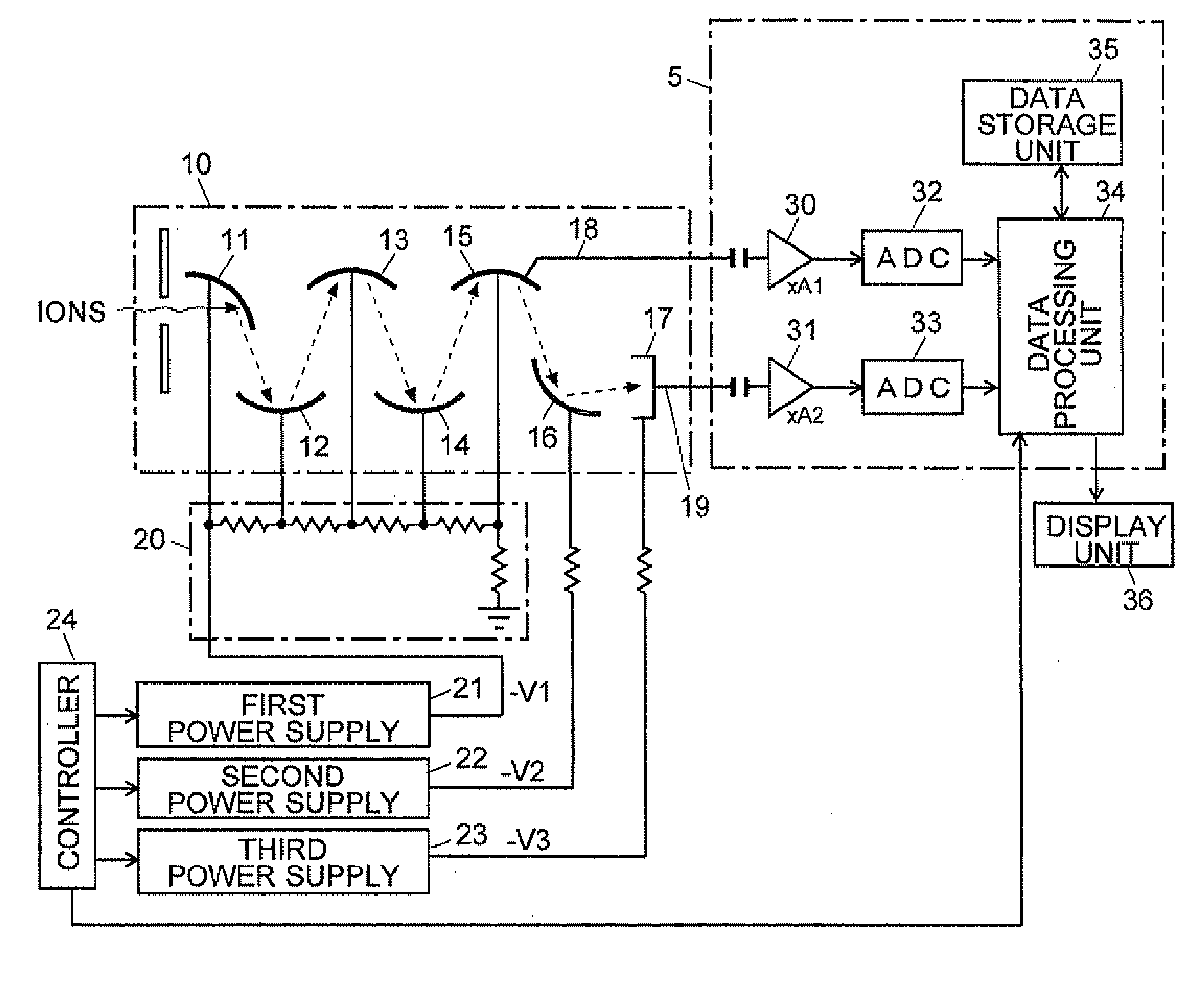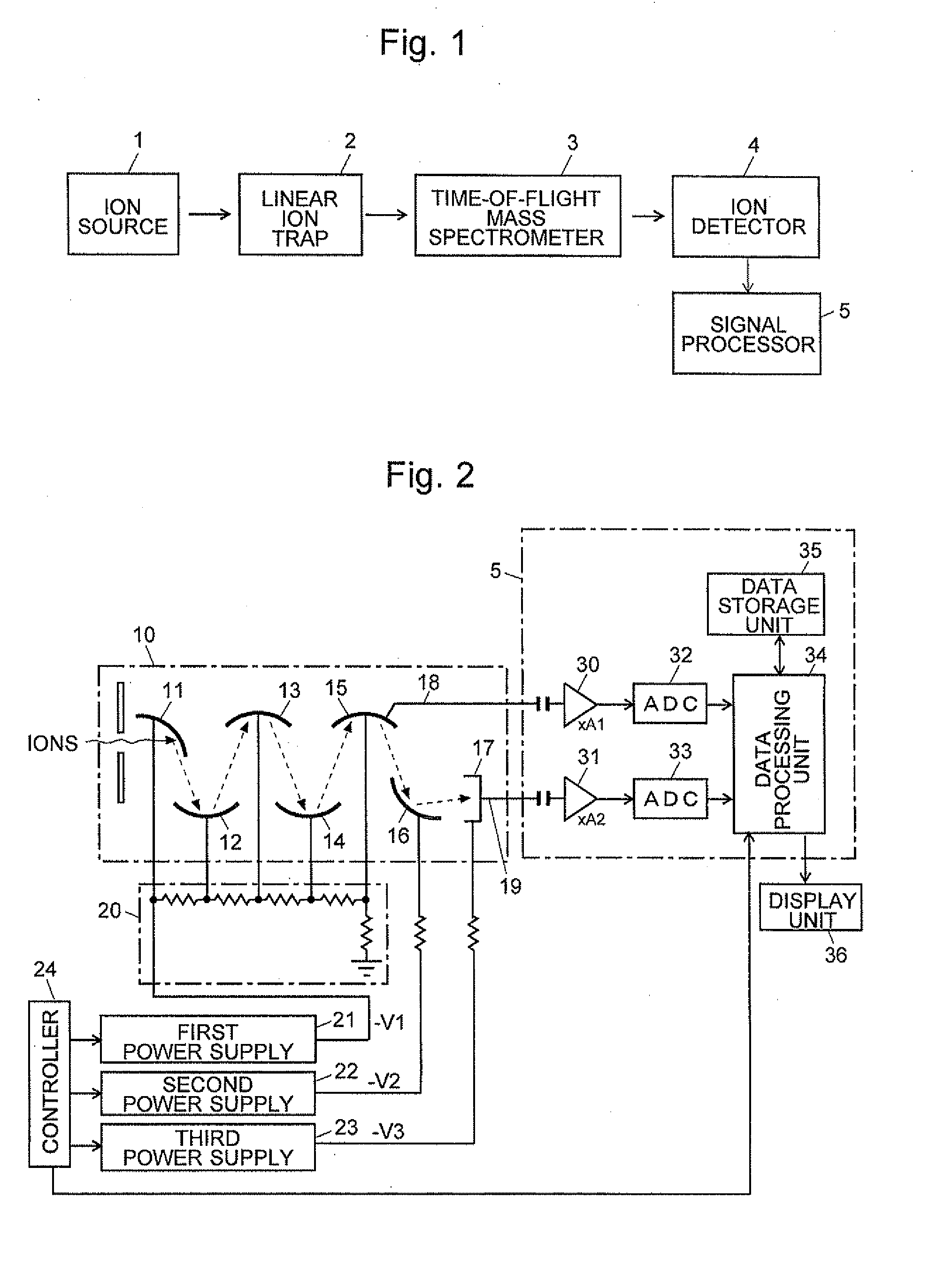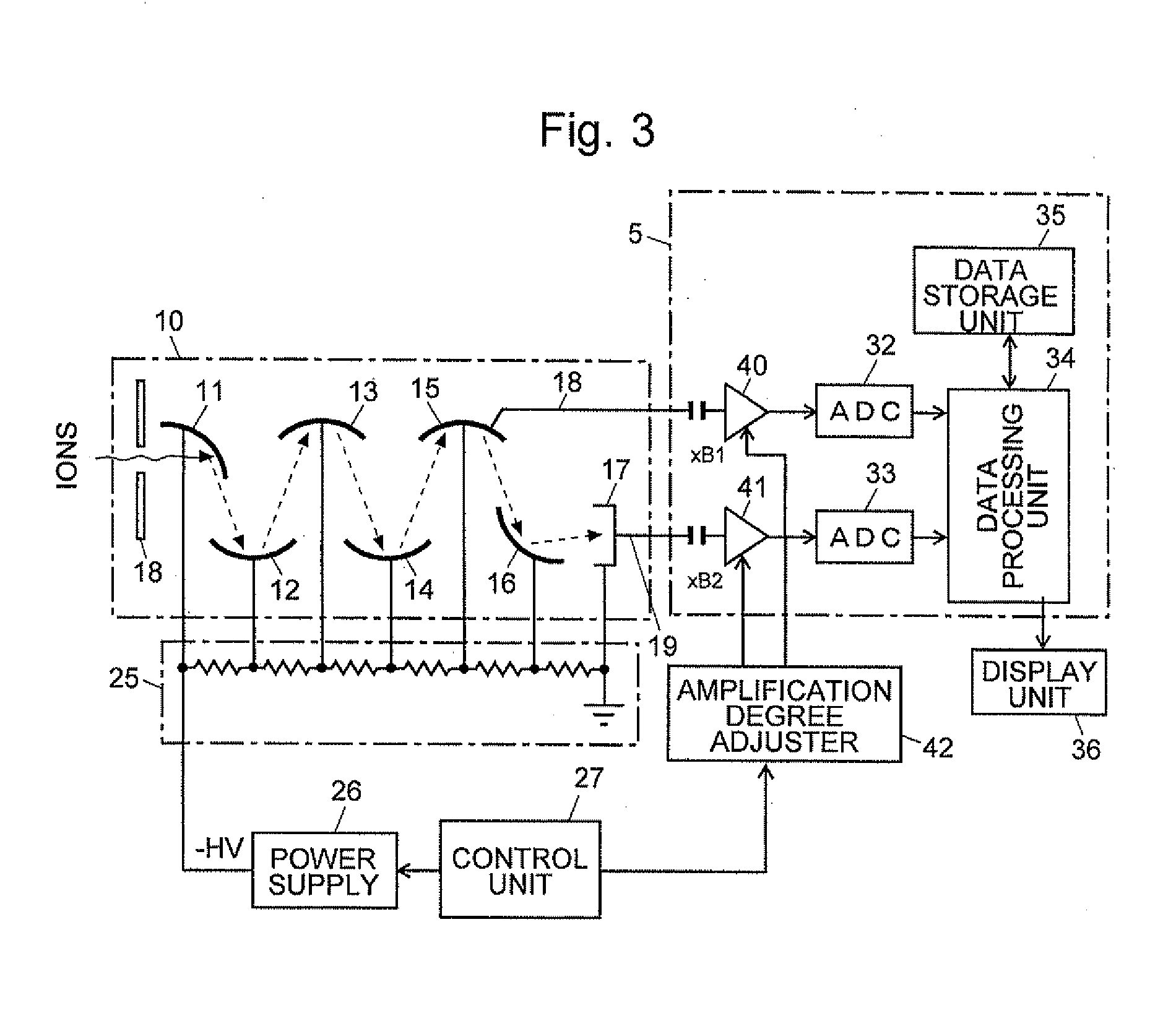Mass Spectrometer
a mass spectrometer and mass spectrometer technology, applied in the field of mass spectrometers, can solve the problems of deterioration of performance, linear ion traps with high upper limit of the amount of ions that can be stored, and saturation of output signals, so as to expand the dynamic range of measurement, the effect of multiplication factor restoration
- Summary
- Abstract
- Description
- Claims
- Application Information
AI Technical Summary
Benefits of technology
Problems solved by technology
Method used
Image
Examples
first embodiment
[0041]The first embodiment of the mass spectrometer according to the present invention will be described with reference to the attached figures. FIG. 1is a schematic configuration diagram of the mass spectrometer of the first embodiment.
[0042]As shown in FIG. 1, the mass spectrometer of the first embodiment includes: an ion source 1 for ionizing sample molecules; a linear ion trap 2 for temporarily storing ions generated in the ion source 1; a time-of-flight mass spectrometer 3 for temporally separating a variety of ions in accordance with their mass-to-charge ratio m / z which are almost collectively ejected from the linear ion trap 2 at a predetermined timing; and an ion detector 4 for sequentially detecting ions arriving at the detector in a temporally separated form. These components are placed in a container (not shown) which is maintained at a vacuum atmosphere.
[0043]The signal detected by the ion detector 4 is sent to the signal processing unit 5, where a predetermined signal p...
modification example 2
[0061]When a sample is measured to obtain mass spectrum data, one of the two detection data D1 and D2 obtained for the same point in time are selected as in the aforementioned manner, and only the selected data are stored in the data storage unit 35. Information (e.g., a one-bit flag) for indicating which of the detection data D1 and D2 have been selected is added, and if a mass spectrum is created and displayed offline, the added information is used to determine whether to perform a level correction, then a level correction is performed if necessary. The advantage of this method is that the required amount of data stored in the data storage unit 35 is merely about one half of the amount in the aforementioned method.
modification example 3
[0062]When a sample is measured to obtain mass spectrum data, one of the two detection data D1 and D2 obtained for the same point in time are selected as in the aforementioned manner. When the detection data D1 are selected, they are level-corrected and then stored in the data storage unit 35. In this case, only one piece of data is memorized for one point in time. Hence, in creating and displaying a mass spectrum offline, a time-of-flight spectrum can be easily created by reading out the detection data from the data storage unit 35.
PUM
 Login to View More
Login to View More Abstract
Description
Claims
Application Information
 Login to View More
Login to View More - R&D
- Intellectual Property
- Life Sciences
- Materials
- Tech Scout
- Unparalleled Data Quality
- Higher Quality Content
- 60% Fewer Hallucinations
Browse by: Latest US Patents, China's latest patents, Technical Efficacy Thesaurus, Application Domain, Technology Topic, Popular Technical Reports.
© 2025 PatSnap. All rights reserved.Legal|Privacy policy|Modern Slavery Act Transparency Statement|Sitemap|About US| Contact US: help@patsnap.com



